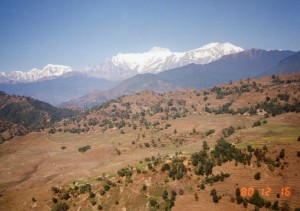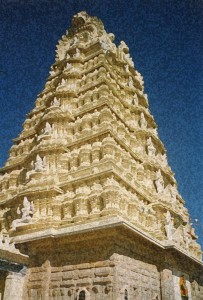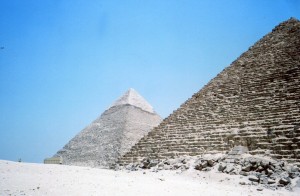Ideas of geography in ancient India kept getting bigger and bigger. Most ancient cultures imagined a cosmic mountain, that’s either the home of the gods, or the center of the universe.
Greeks imagined the center of the world at Delphi, and their cities built so many shrines there that it became one of their most important political centers.
Greeks also envisioned Mount Olympus–the place where Zeus and the other 11 gods feasted and fought in their hall.
The Chinese imagined Tai Shan as the site where the emperor renewed harmony between Heaven and Earth.
Israel’s Ten Commandments were given on Mount Sinai, a key meeting place between Yahweh and His chosen people.
Egypt didn’t have mountains, so its people imagined one–the primal mound that emerged from water, which all creation took place on.
But Indian mountains were very different.
Indian ideas of the sacred mountain weren’t in the human dimensions of these other cultures’ ideas. Instead, the imagination took over.
1. Mount Meru was 80,000, or 84,000 yojanas high (ideas of yojanas varied from 6 to 15 miles during India’s long history)–even Zeus and the Yellow Emperor would have gotten nosebleeds up there.
2. 4 classes of gods inhabit 4 terraces that extend half way to Meru’s top. Indra’s palace is on the summit. He was the most important god from the Rg Veda.
3. Above Meru are 3 levels of heavens: the heavens of the gods of desire (the Kamadhatu); the 17 heavens of the realm of form (the Rupadhatu), and the 4 heavens of the realm of non-form (the Arupadhatu).
The temple above (in Mysore) reflects these ideas of a profusion of forms.
As such, it’s the opposite of the forms of the ancient Egyptian pyramids that we’ve been exploring. They, and ideas of Delphi and Mount Olympus, became models of reality for the West–clear lines, simple shapes and static forms.
But we’re not done–this is India! No form can be elaborated too much there.
Greece’s Homer imagined an ocean that encircles all the earth’s land, like a belt. Indians expanded this idea into seven rings of oceans and mountains that surround Meru.
Then around 2,000 years ago, Mahayana Buddhists extended this idea of the cosmic mountain to a vast universe of innumerable cosmic mountains.
So the idea of the cosmic mountain grew so vast that it transcends material and spatial limits. Meditation on it can thus dissolve you into spiritual realms.
So the biggest mass imaginable brings you to its opposite. Unity of opposites is a common Indian theme.
But we’re still not done. The idea of Mount Meru was exported to many cultures in Southeast Asia. It assumed many local variations. Mount Meru inspired diverse ideas that even ancient Indians didn’t imagine. For example, you can see Thai transformations of Mount Meru at Bangkok’s Wat Pho.




Comments on this entry are closed.